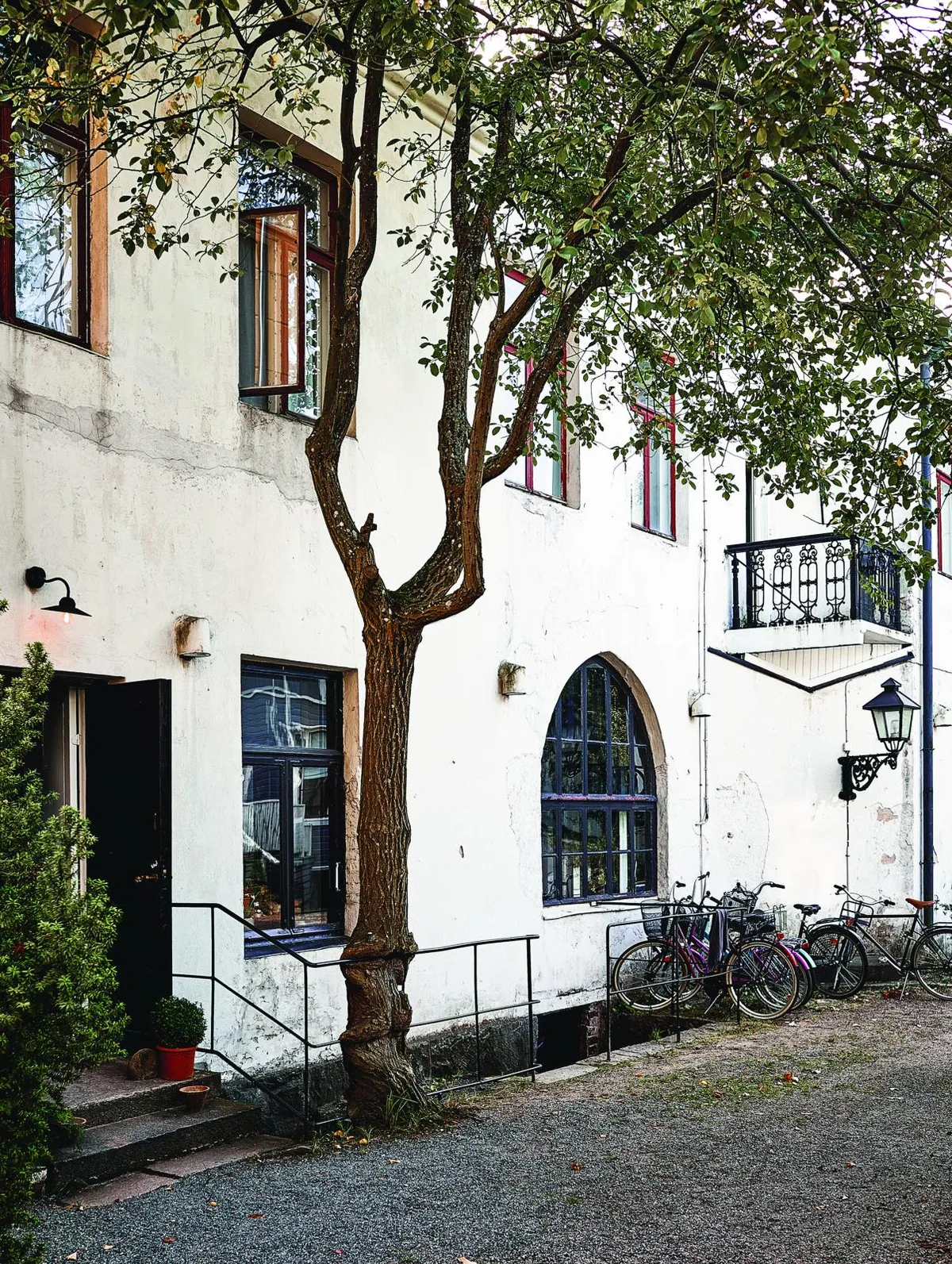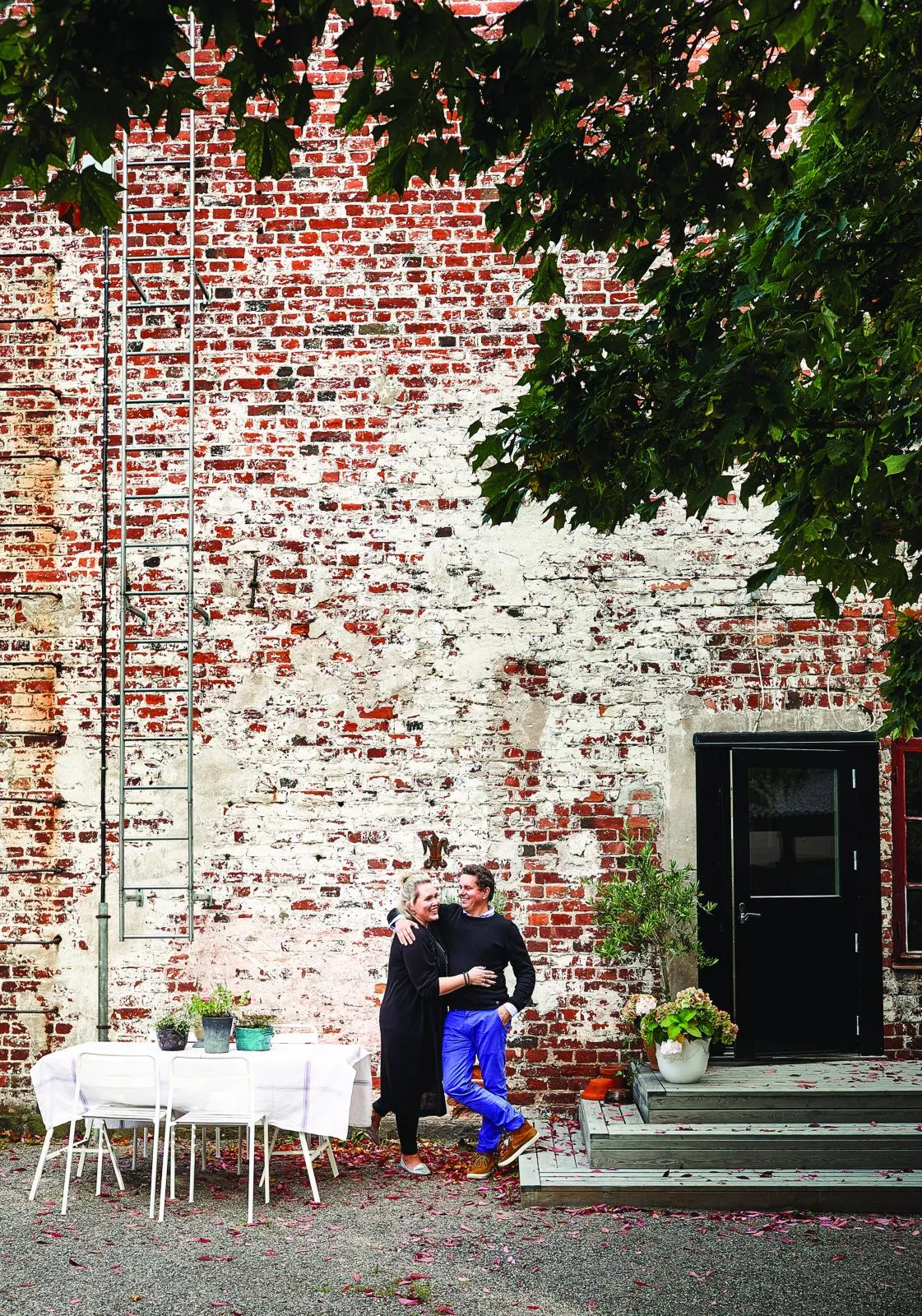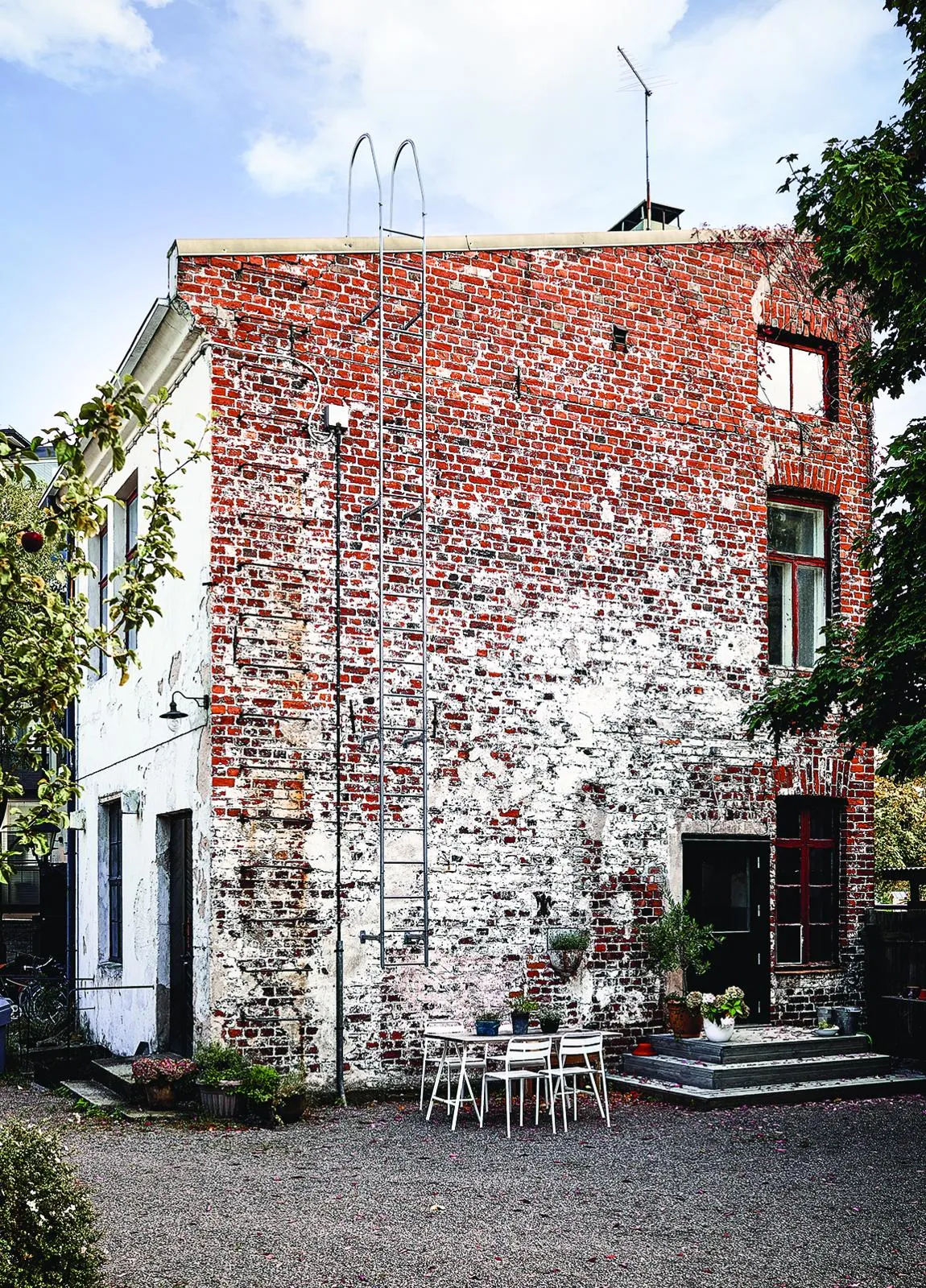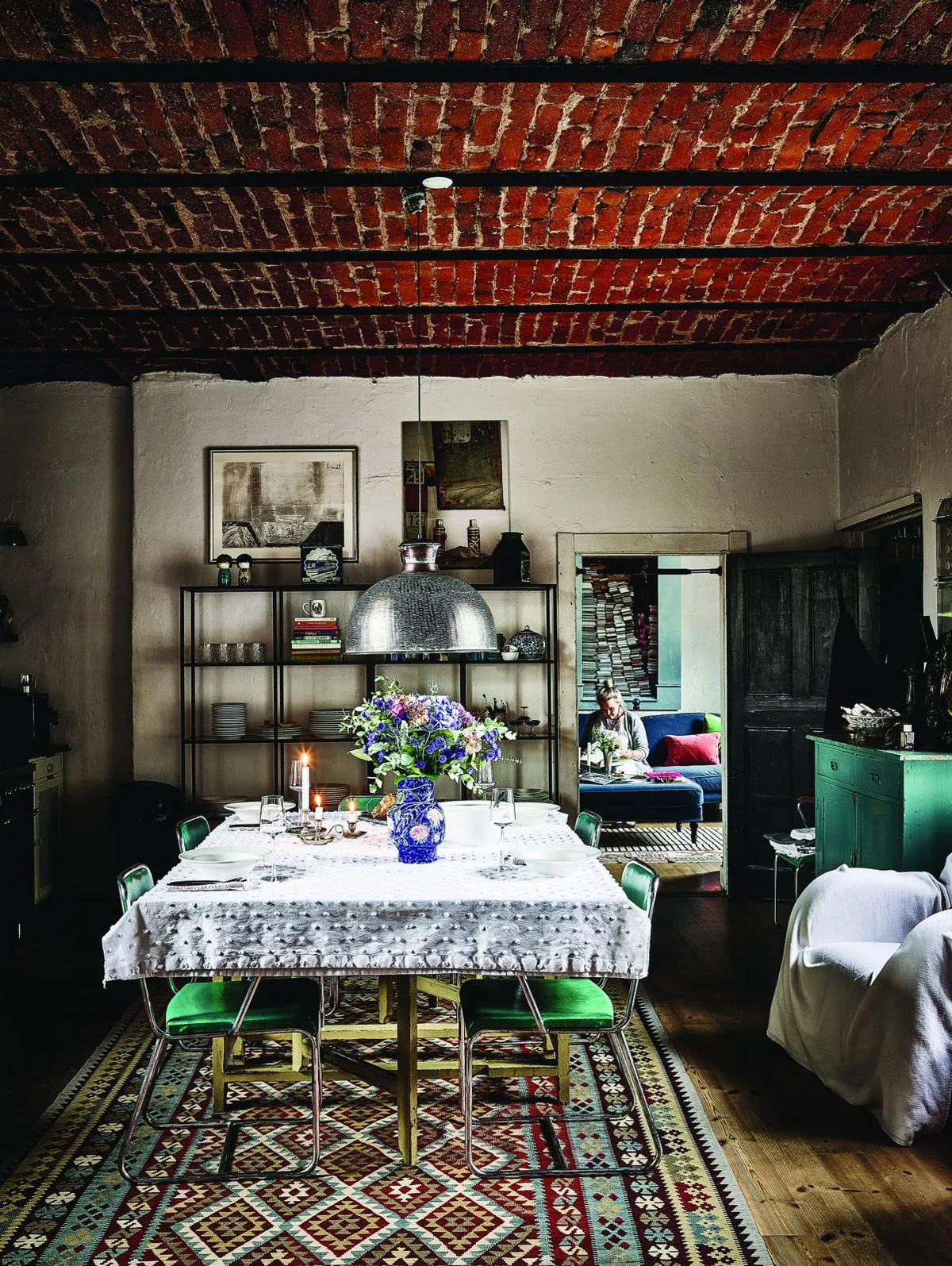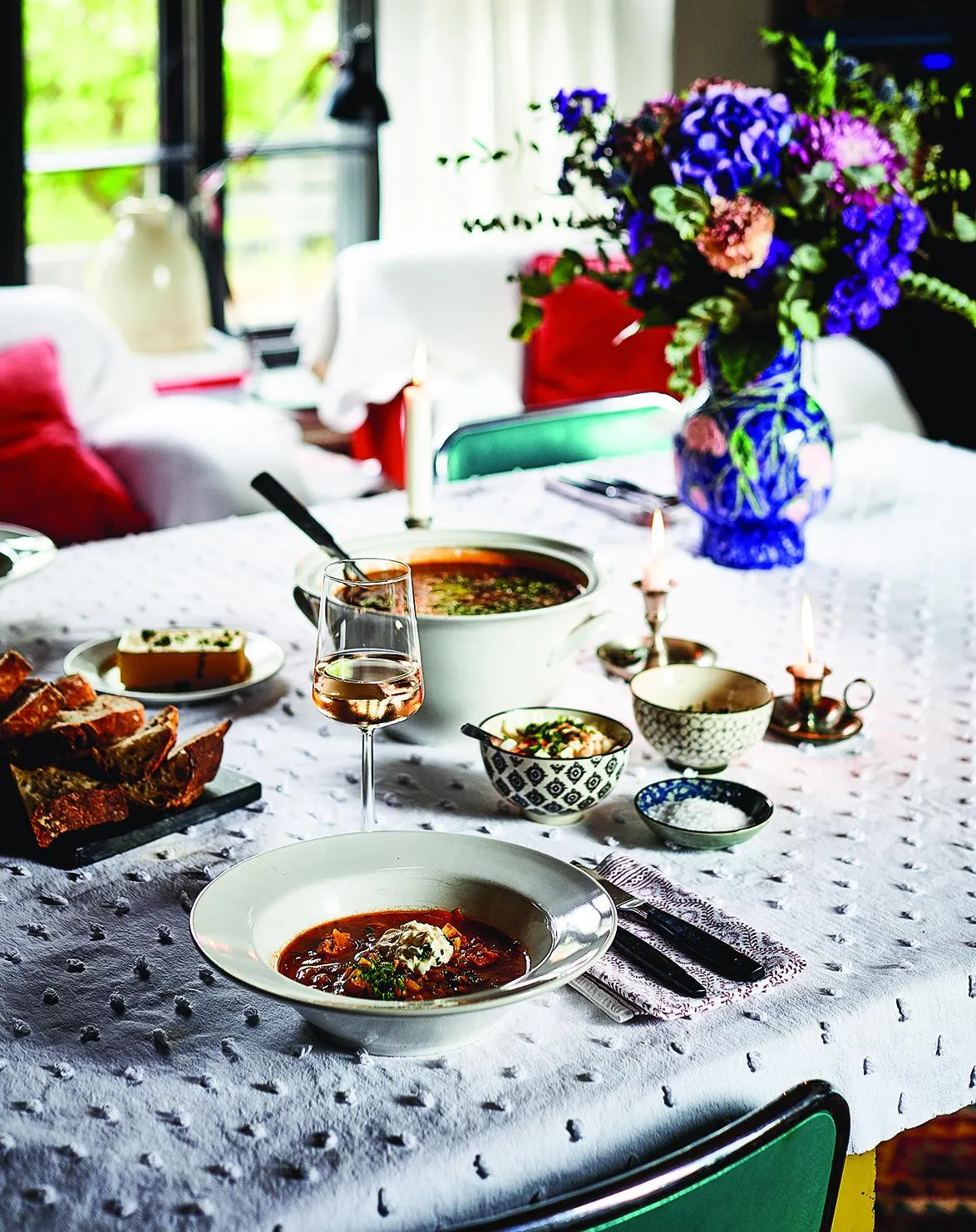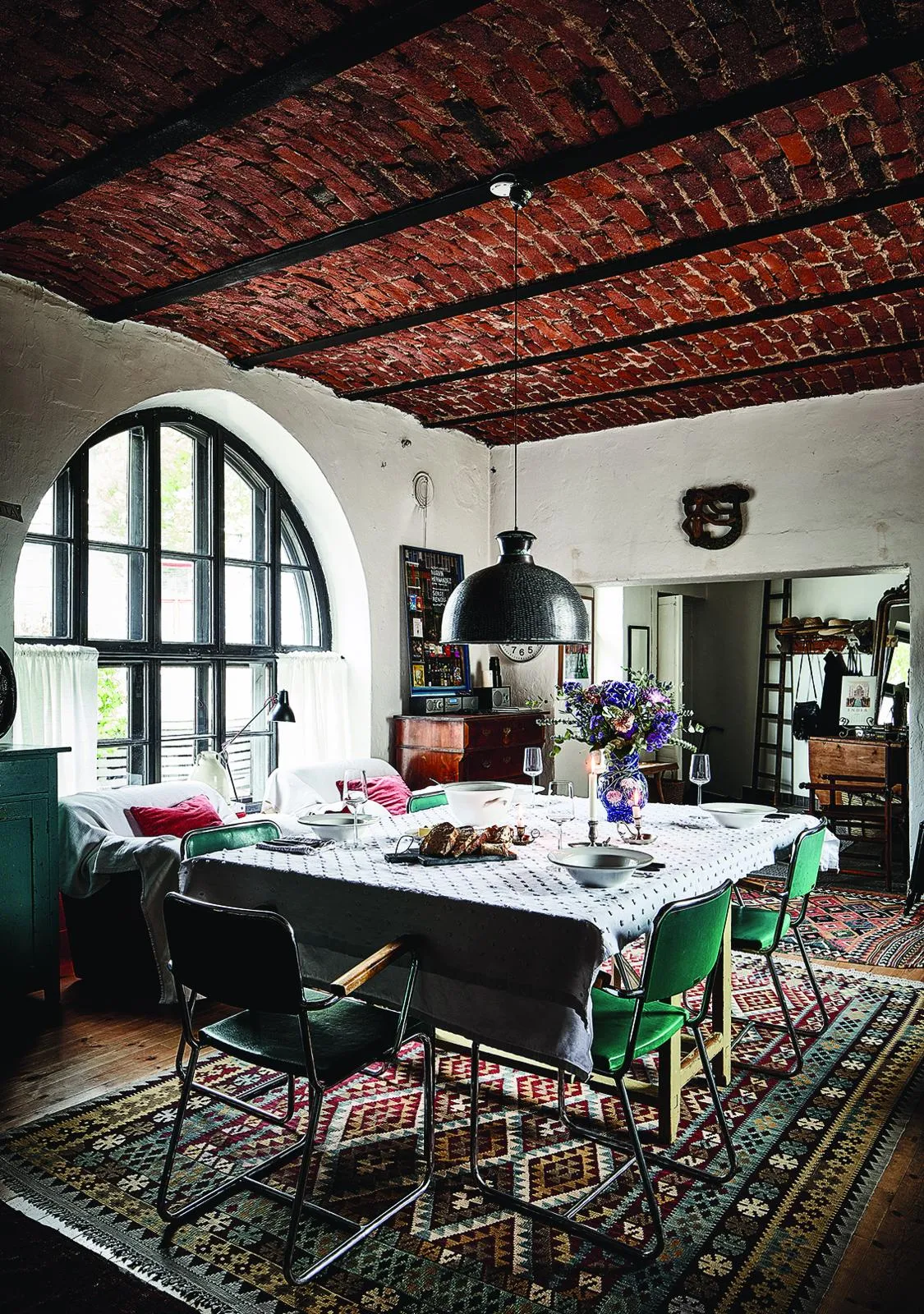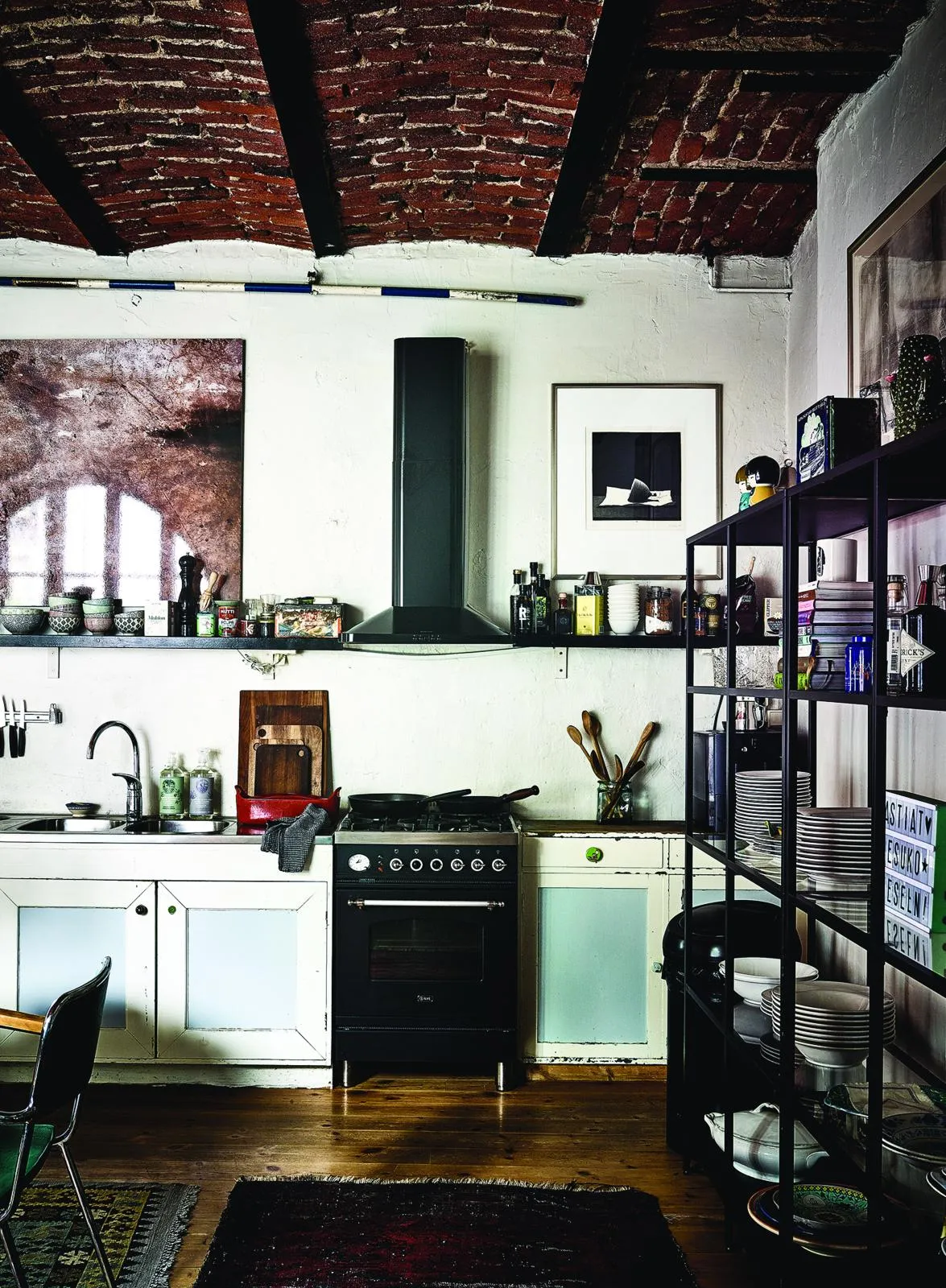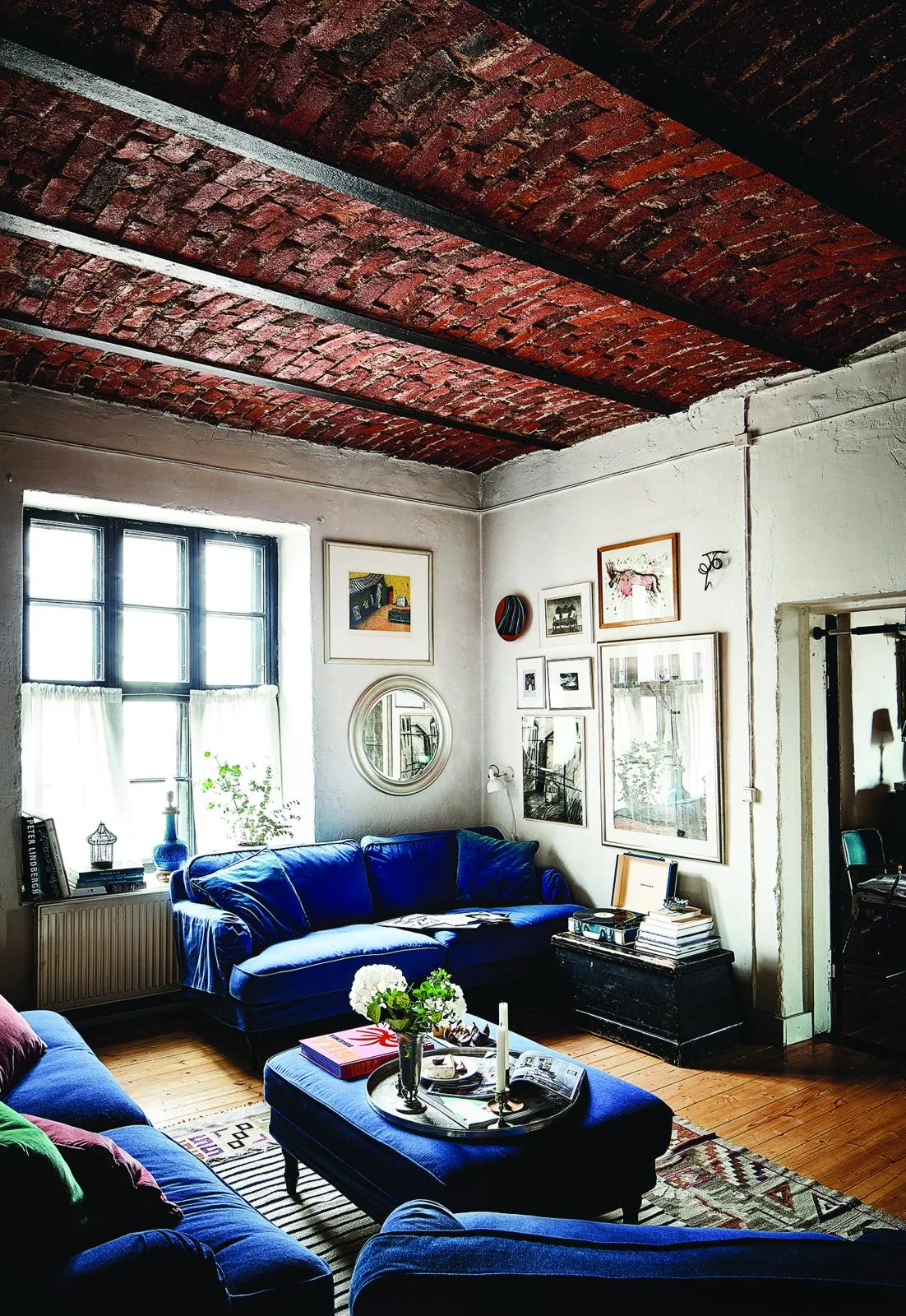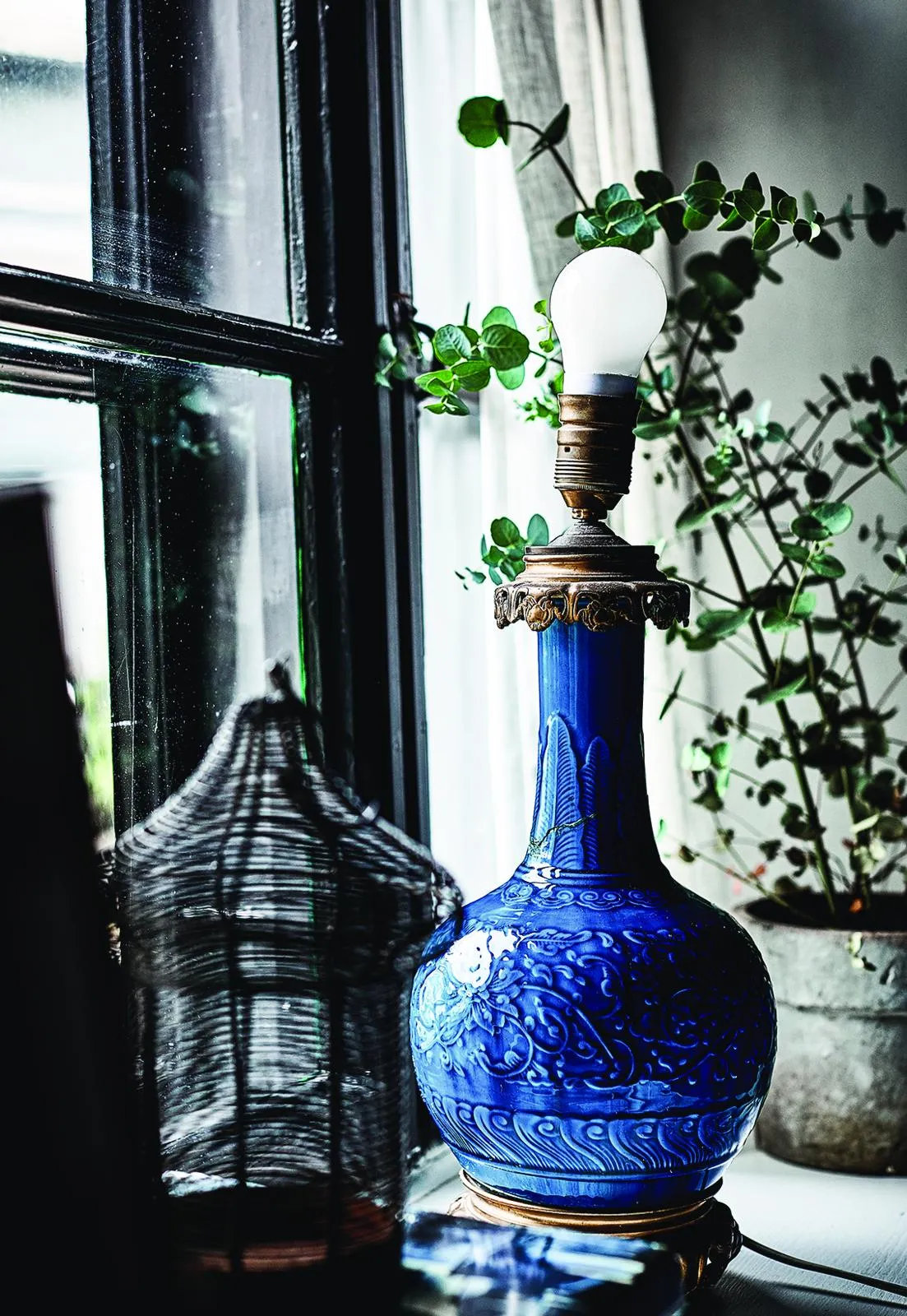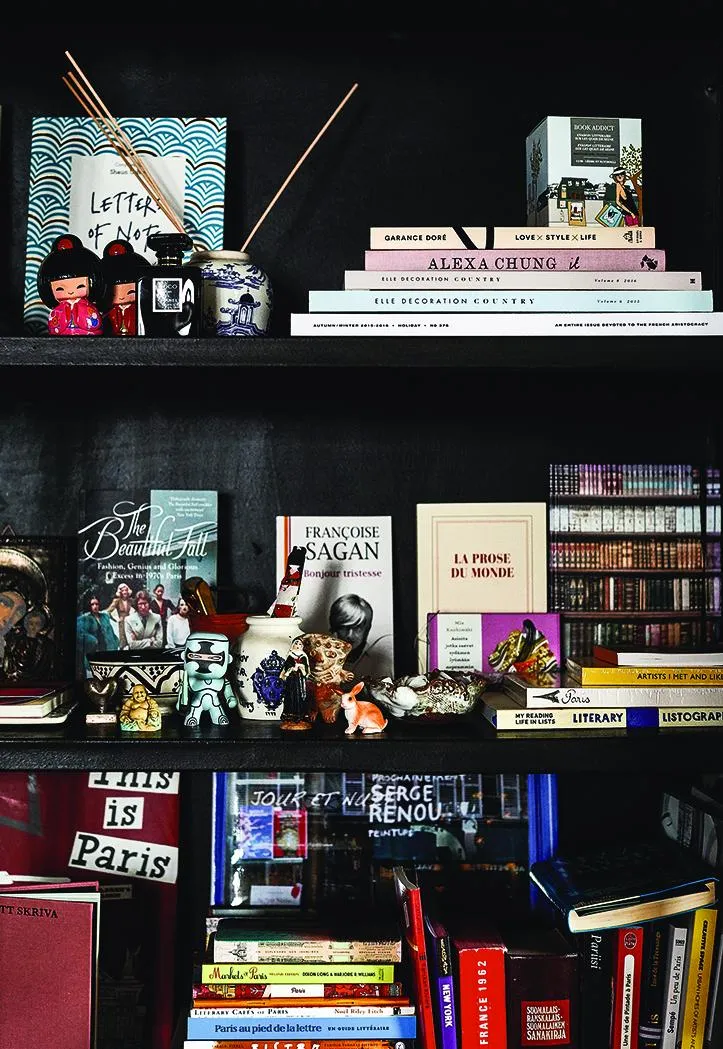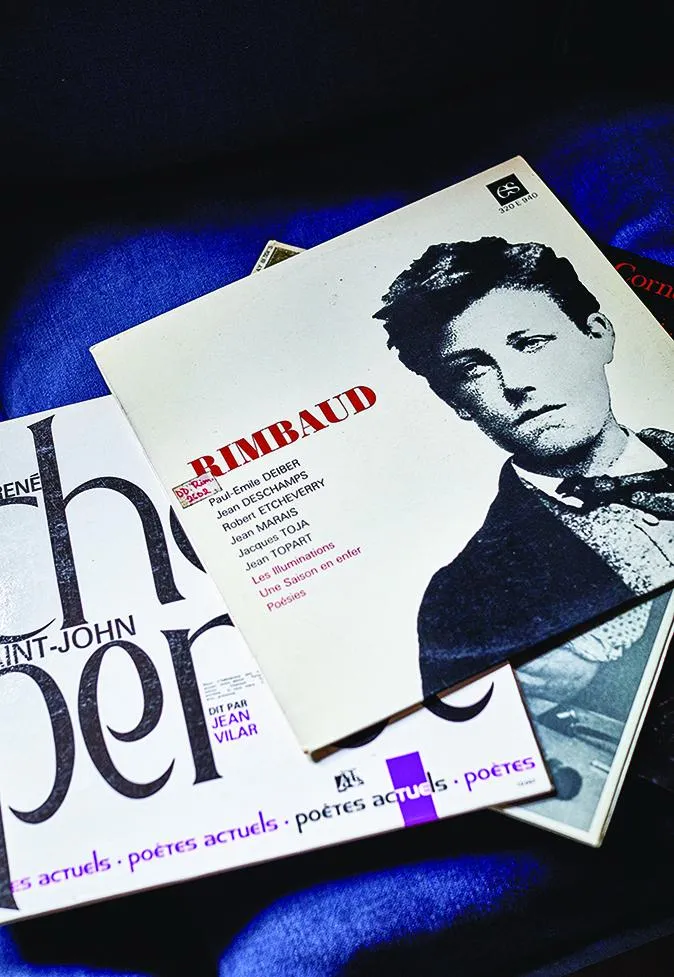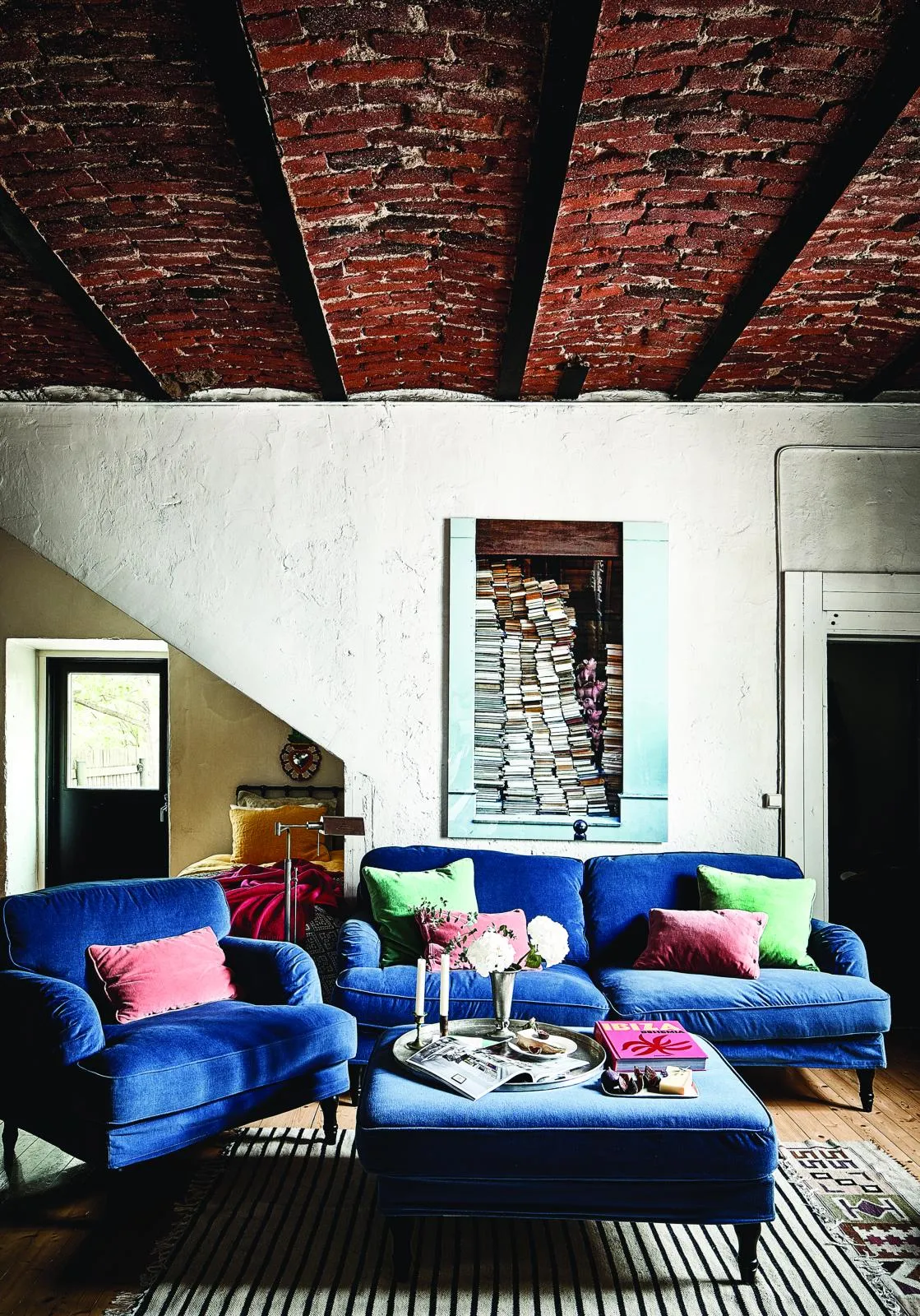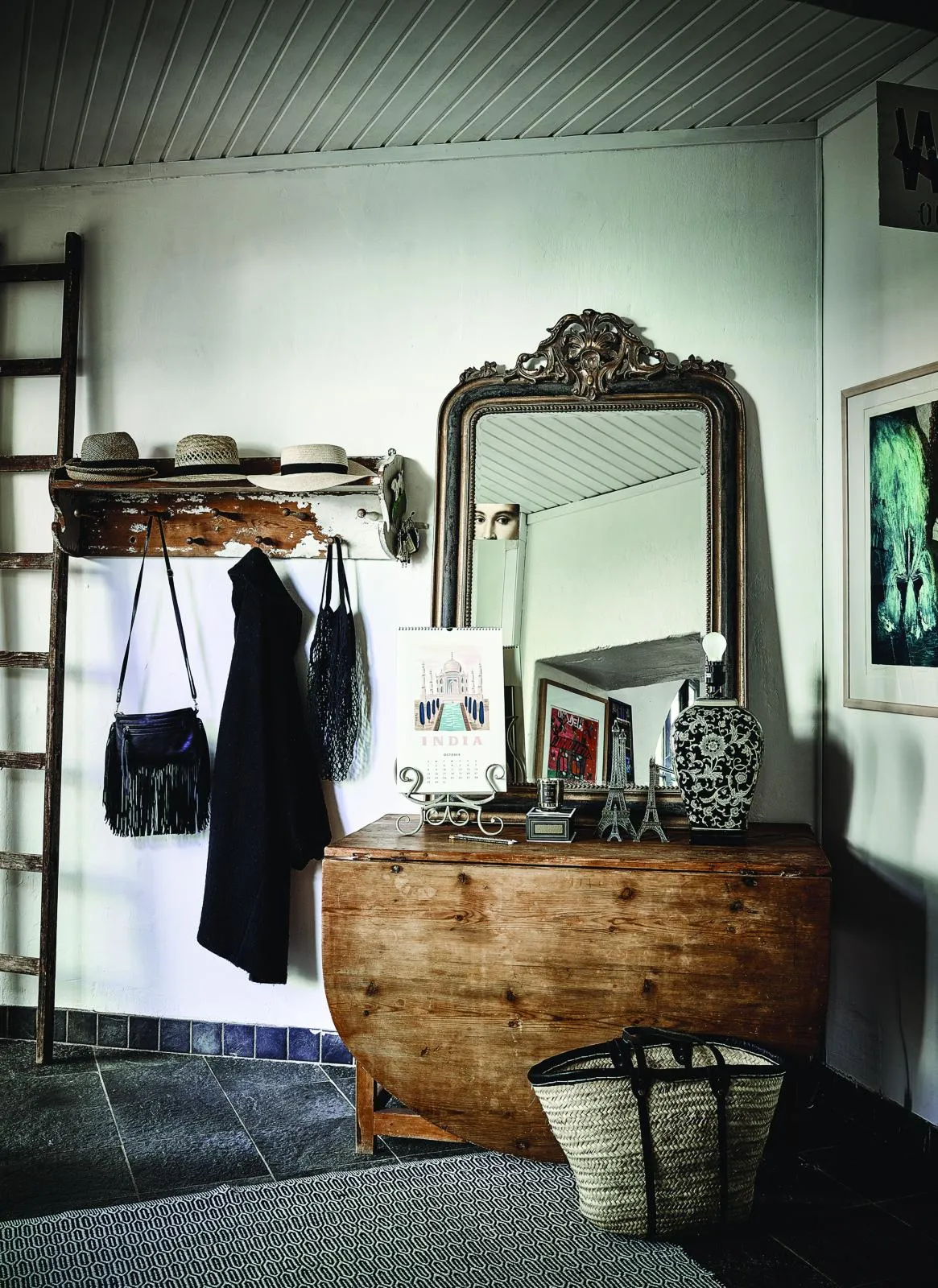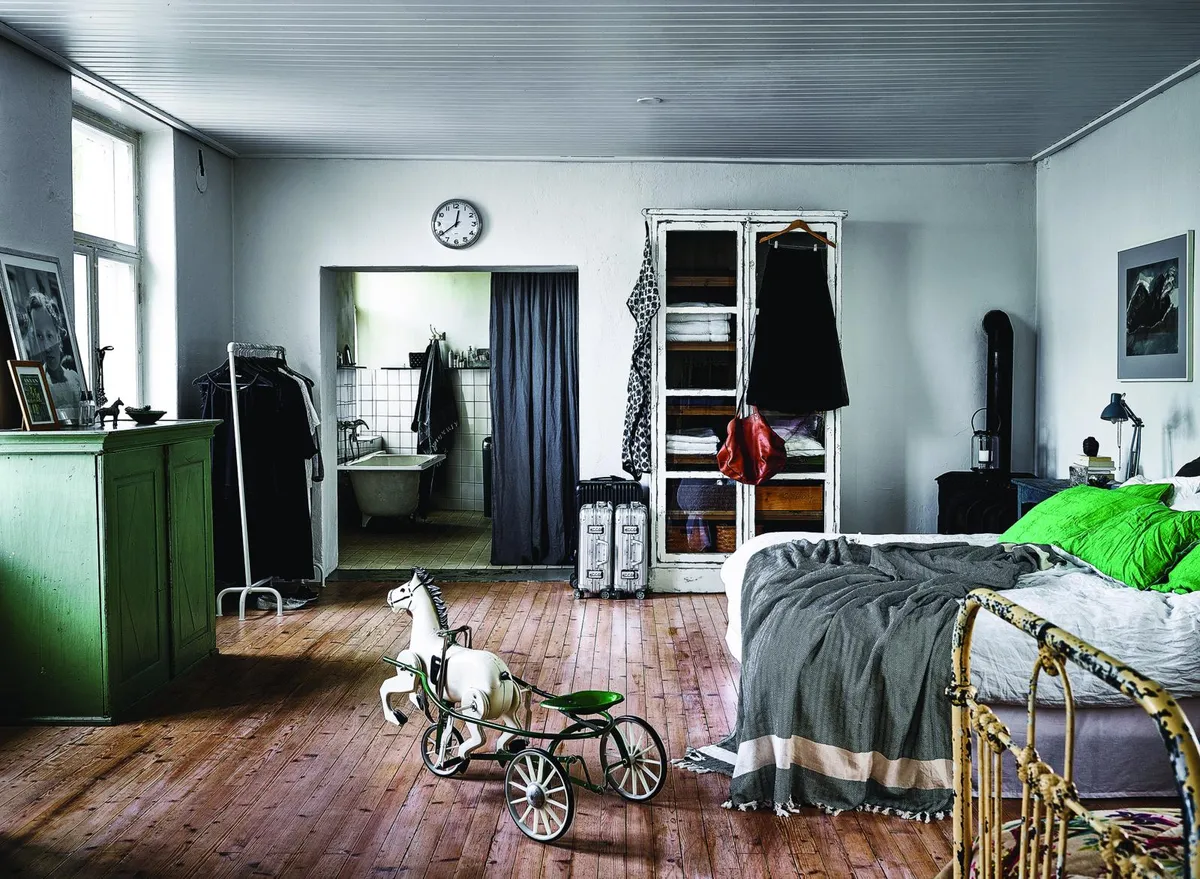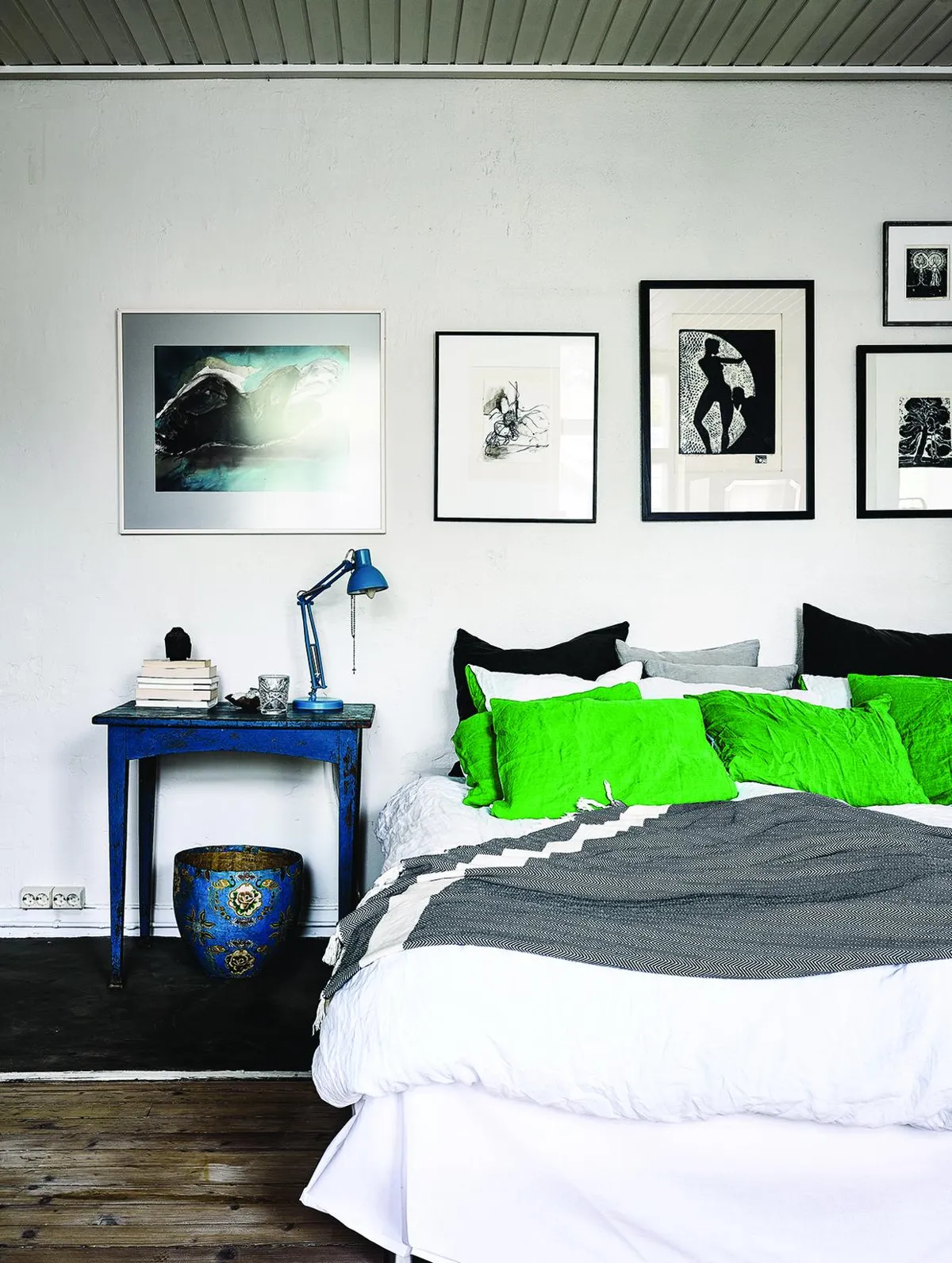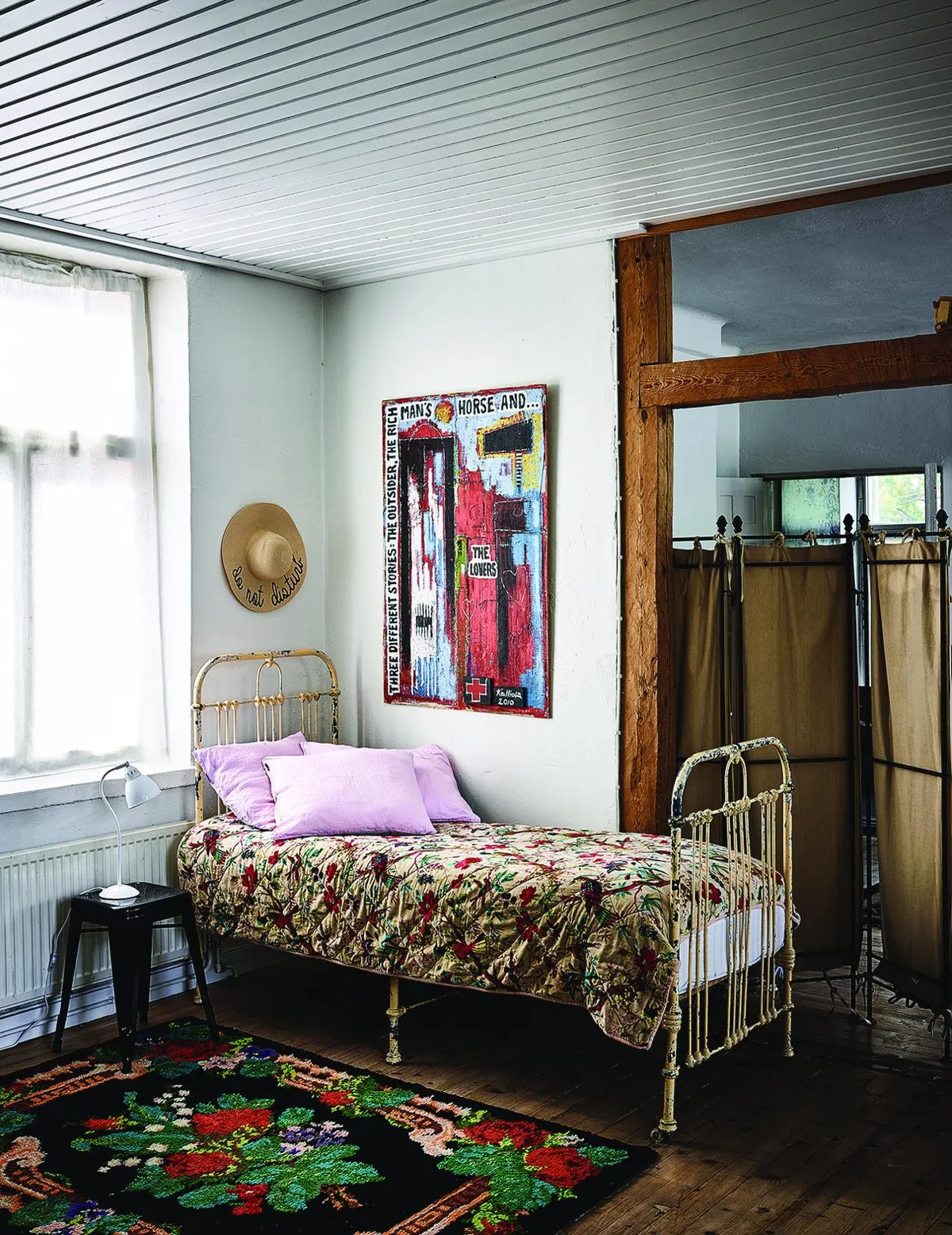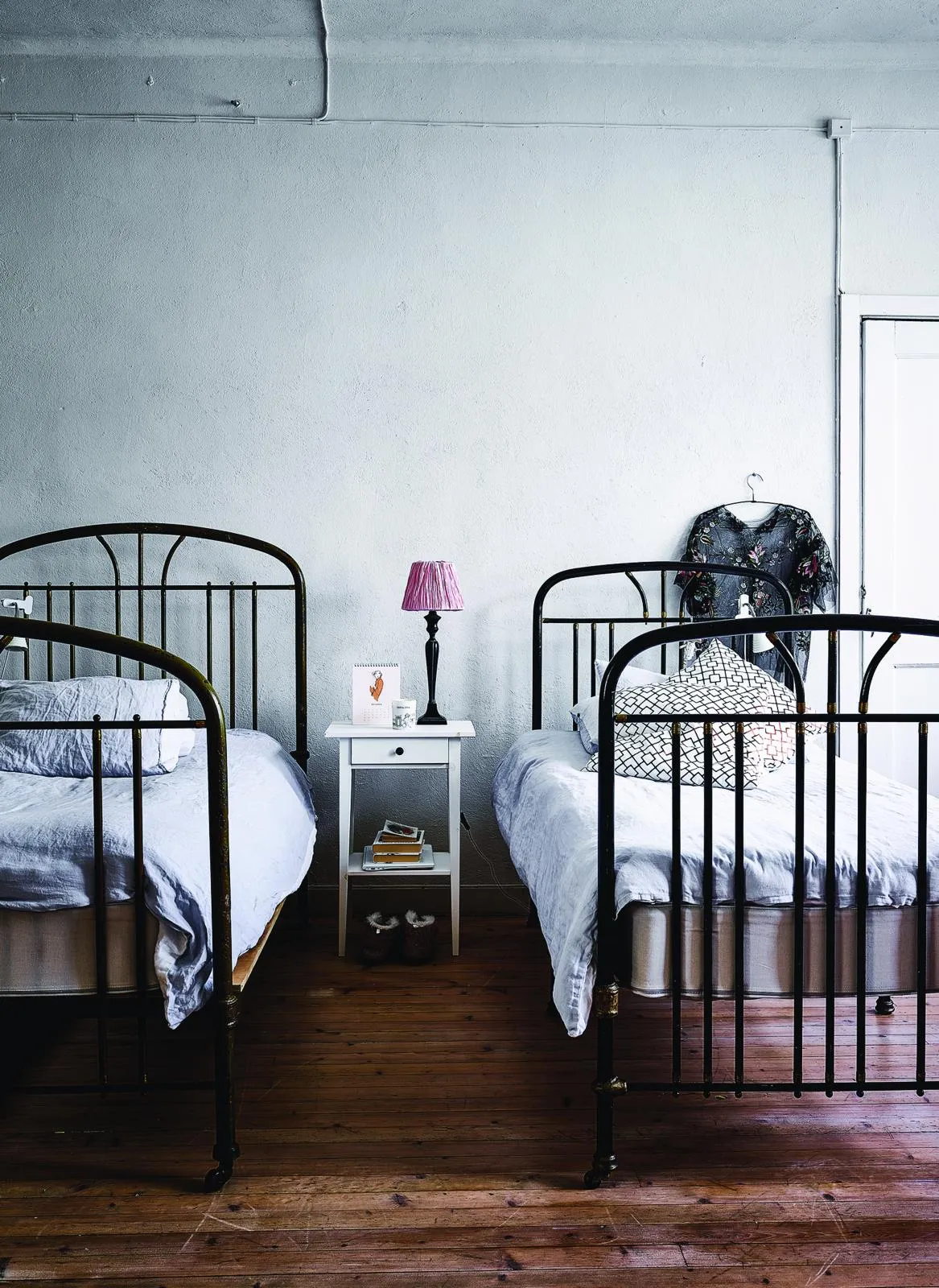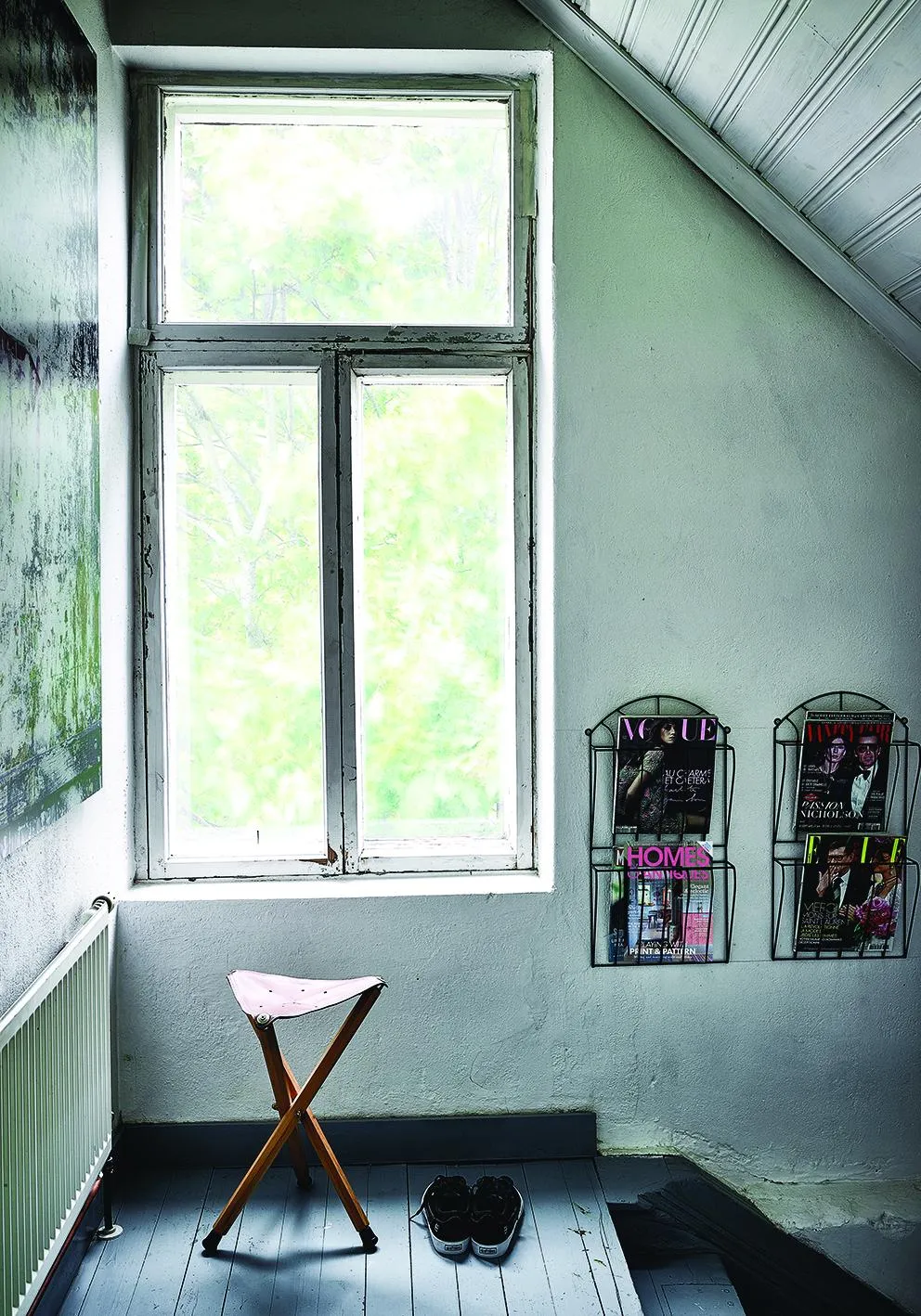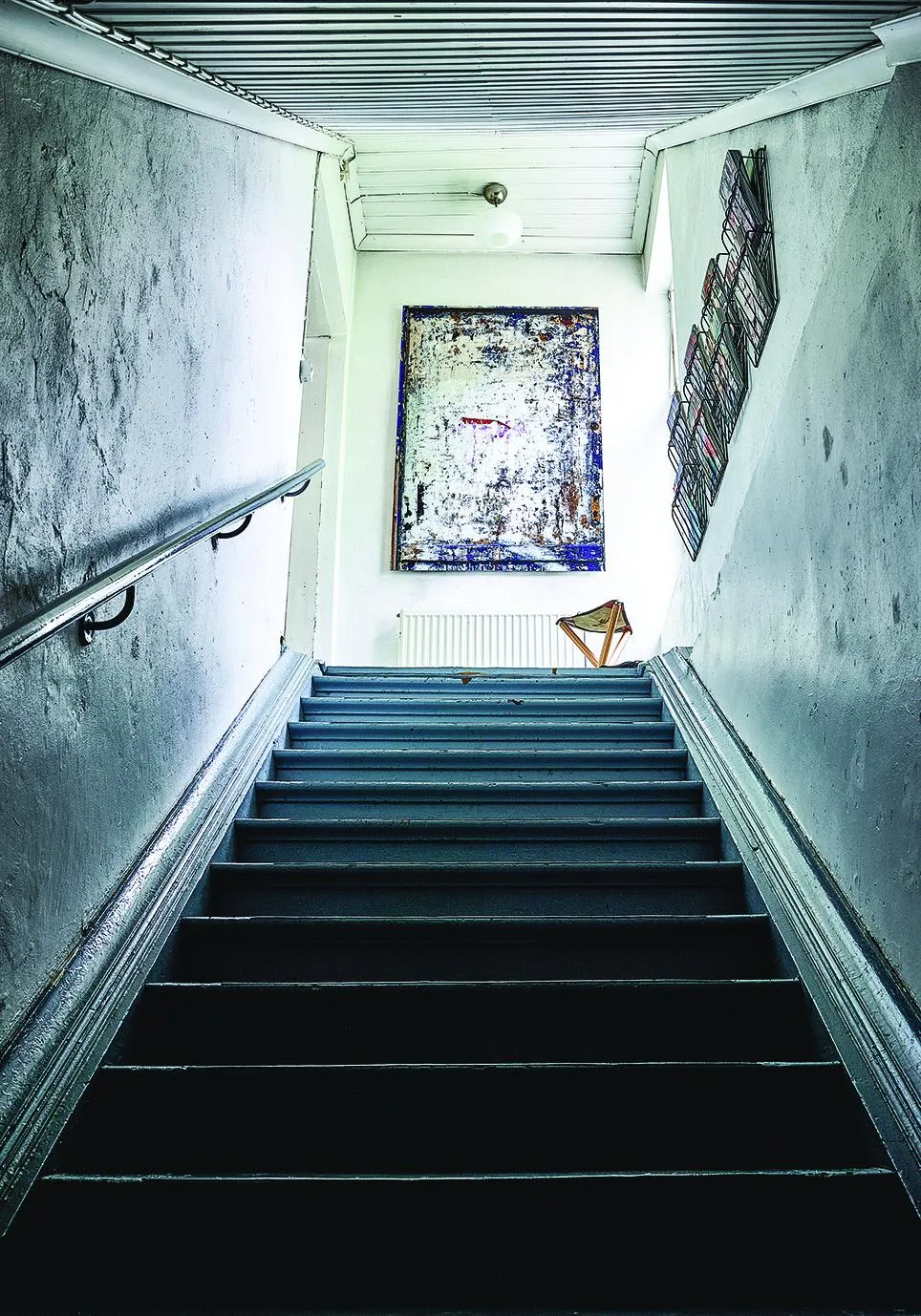Even from the outside, Anna Piiroinen and Tomi Parkkonen’s home in the small coastal town of Hanko in southern Finland is the picture of bohemian romance. The two-storey whitewashed building still features many of the charming architectural details common to the elaborate properties built in the late 19th century, when Hanko was a well-to-do spa town popular with Russian nobility.
With its original wrought-iron balcony, matching lantern and large arch-shaped windows, it’s no wonder the intriguing, wedge-shaped building caught the eye of writer Anna and her husband Tomi, a photographer. They first spotted the building while on a romantic getaway many years ago, and learned that it had once been a factory producing tins for Hanko, an iconic brand of Finnish biscuits.
Y0u might also like a vintage-filled farmhouse restoration in Finland
The building left a deep impression on the couple and, some years later in 2005 when it came up for sale, they jumped at the chance to buy it. Living in Helsinki at the time, they saw it as an opportunity to relocate their young family to the seaside.
Transforming the old factory into a home presented an exciting challenge and the couple were determined to honour the building’s industrial mood and ruggedness, says Anna. ‘A factory is a factory regardless of how many layers of paint you add. At the same time, we wanted our home to be relaxed and cosy.’
Although the building was in a dire state, the couple approached the renovation with a light touch, removing problems rather than restructuring. Down came a false ceiling to reveal dramatic brickwork, out went the rotten floor, which was replaced with simple floorboards.
Once the dirty work had been completed, walls were whitewashed and the couple began the process of putting their own stamp on the building. They chose simple furniture – a mix of antiques and flea-market finds, along with pieces passed down from friends and family, as well as unfussy contemporary designs.
You might also like decorating with inherited antiques
Stepping through the large double doors today, the building’s industrial heritage is immediately apparent: the large entrance hall leads into a huge room with a dramatic vaulted brick ceiling. Filled with natural daylight, which pours through the arched window that dominates one wall, it was obvious to Anna and Tomi that this space would be best used as a kitchen-cum-dining room.
They chose vintage furniture with a hint of the factory floor about it, such as the Tolix stools and the large pendant light hanging over the dining table. The black Smeg cooker, open metal shelves and vintage ladders that lean against various walls are also clear nods to the building’s history. Colourful rugs, pretty vintage tableware and, in the L-shaped living room at the far end of the living space, squashy sofas and shelves filled with quirky flea-market finds complete the ‘comfortable industrial’ look that Anna and Tomi were determined to create.
This combination of vintage and modern continues throughout the house. Anna traces her love of what she describes as a ‘relaxed boho look’ to school days spent in France, and so it’s no surprise that French antiques have worked their way into the mix, most notably the large mirror in the hall.
Upstairs, in another mostly open-plan space, two sleeping areas and a bathroom are separated by screens and simple curtains. In keeping with the factory aesthetic, the furniture is minimal. Twin metal beds remain in what was once their children’s ‘room’ and in what is now the master bedroom clothes are stored in an old haberdasher’s cupboard and on open clothes rails.
Pops of emerald green and bright blue enliven the almost monochrome decor. In winter, warmth comes from a woodburner in the corner, ensuring that the building feels cosy, despite the industrial aesthetic.
